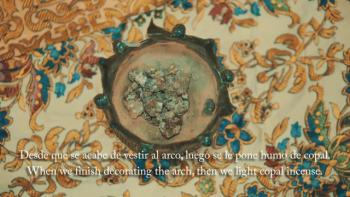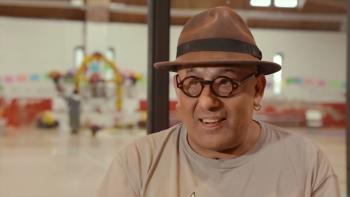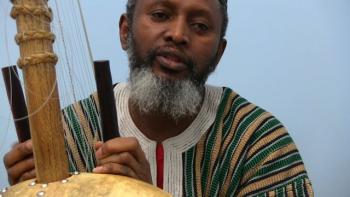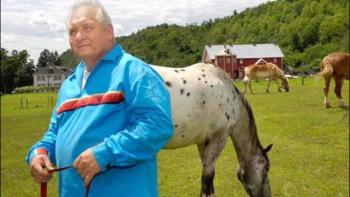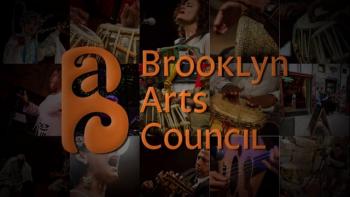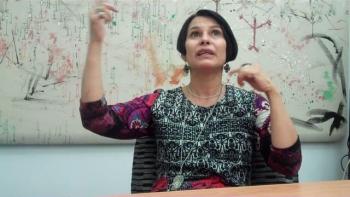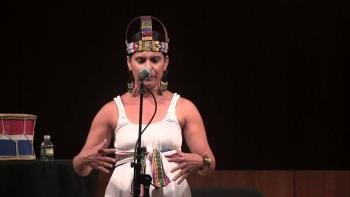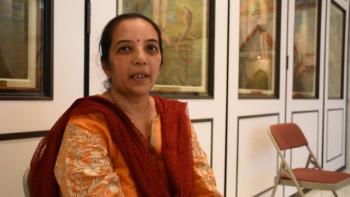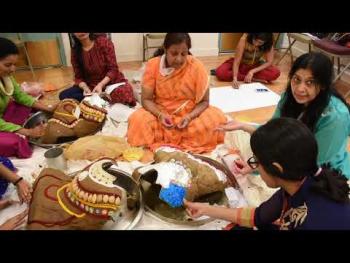Browse Digital Heritage
All of us as have two experiences in common — birth and death. One is greeted with joy and celebration; the other is often accompanied by a wide range of emotions such as fear, relief, sorrow, joy, grief, and loss. In the process of dying, and in death itself, cultural practices and rituals play a key role in the individual’s and family’s experience of end-of-life. Understanding how death and dying have come to be expressed in culturally-specific traditions and diverse art forms offers remarkable insight into end-of-life situations, allowing healthcare professionals to develop essential cultural competencies and increased empathy.
The End-of-Life Toolkit is a set of resources that accompanies an eLearning course entitled “Heritage to Health: Harnessing the Power of the Arts for End-of-Life Care”. The Toolkit provides resources on death and dying, geared to both health professionals and the public. It contains links to textbooks, stories, poems, cultural perspectives on death and dying, as well as compelling video clips, examples of various art forms, and “how to” information for creating various types of memorials when an individual passes away. The Toolkit expands the opportunities for healthcare providers to enhance their skills in end-of-life care through the use of the Arts. It focuses on ways to create a culturally sensitive yet individualized environment for those at the end-of-life, using the Arts as a clinical tool for supporting patients’ beliefs, traditions, and customs in a meaningful way.
Developed by City Lore and the Nurse Practitioner Healthcare Foundation. Funded by the Robert Wood Johnson Foundation and the National Endowment for the Arts.
Ritual
Belief
The St. Joseph's Day Table is a primarily Italian American tradition that honors the saint on his feast day, March 19. It recalls the answer to prayers for rain from drought-stricken faithful in Sicily in the Middle Ages, and their subsequent offering of a meal for travelers, strangers, the poor and the entire community in thanksgiving. This video takes you to a Table hosted by Bernice Hotchkiss in 2019, where she describes the foods and recalls how she began learning the recipes from older women in her community. The accompanying notes give more details on the traditional foods, their symbolism and current practice in western New York.
Ritual
Foodways
Belief
Porfiria Mijangos explains the elements of a traditional ofrenda for Day of the Dead in her region of Oaxaca, Mexico. Interview and footage are from the Day of the Dead celebration at Orleans YMCA, Medina, New York, November 1 2019. Members of her extended family built the large ofrenda seen here for the annual community-wide event.
Ritual
Foodways
Material Culture
Belief
The video documents the creation of a Oaxacan sand painting by Antonio Cruz Zavaleta, for Dia de los Muertos/Day of the Dead celebration on November 1, 2019, held at the Orleans County YMCA, Medina NY.
Ritual
Material Culture
Belief
The song, Chedoe, performed by Salieu Suso, is like poetry and story that is created by the Jali but it is informed by the community. As a djeli or griot, I am equal part oral historian, poet, storyteller, and musician. My art is found in the music, the story being told, the syncopation between voice, and Kora, and the ability to keep the audience engaged and participate.
Ritual
Music
Chief Tom Porter of Akwesasne, Iroquois Mohawk community in northern NY, tells (an abbreviated version of) the traditional longhouse story of "The Three Sisters." The story is about the importance of corn, beans, and squash as staple foods and includes the origin story of these "three sister" foods themselves and how they were determined to be the most prominent of all foods. Porter also talks about traditional preparations of corn and related foods.
Ritual
Foodways
The Hudson Crossing Park Cardboard Boat Races are part of Canal Splash! a statewide celebration co-sponsored by the New York State Canal Corporation and the Erie Canalway National Heritage Corridor.
Ritual
Place
Material Culture
Demonstration of Kwe-Kwe pre-wedding ritual by Winston "Jeggae" Hoppie at Brooklyn Arts Council's The Sweetest Song Festival 2014.
Ritual
Dance
Music
Brooklyn-Dominican singer Irka Mateo performs two folkloric Dominican songs that come from the popular religion celebrations.
Ritual
Music
Ritual
Place
Health
Material Culture
Migration
Belief
The Non-Gujarati Jains is fieldwork project by videographer and Conceptual artist, Smrita Jain. Project for Citizen Folklife Program, Brooklyn Arts Council.
Ritual
Place
Health
Material Culture
Migration
Music
Belief
Search
Tradition
- (-) Remove Ritual filter Ritual
- Belief (10) Apply Belief filter
- Material Culture (9) Apply Material Culture filter
- Music (9) Apply Music filter
- Place (7) Apply Place filter
- Migration (6) Apply Migration filter
- Foodways (4) Apply Foodways filter
- Health (4) Apply Health filter
- Dance (2) Apply Dance filter
- Games (1) Apply Games filter
- Verbal Arts (1) Apply Verbal Arts filter
Collection
Community
- Brooklyn Arts Council (11) Apply Brooklyn Arts Council filter
- GO Art (3) Apply GO Art filter
- Arts Westchester (1) Apply Arts Westchester filter
- City Lore (1) Apply City Lore filter
- New York Folklore (1) Apply New York Folklore filter
- Staten Island Arts (1) Apply Staten Island Arts filter
- The Folklife Center at Crandall Public Library (1) Apply The Folklife Center at Crandall Public Library filter
- Traditional Arts Upstate New York (1) Apply Traditional Arts Upstate New York filter
Culture
- India (5) Apply India filter
- Dominican Republic (2) Apply Dominican Republic filter
- Mexico (2) Apply Mexico filter
- American (1) Apply American filter
- China (1) Apply China filter
- Gambia (1) Apply Gambia filter
- Guyana (1) Apply Guyana filter
- Italy (1) Apply Italy filter
- Mohawk Nation at Akewesasne (1) Apply Mohawk Nation at Akewesasne filter
- Paraguay (1) Apply Paraguay filter
- Sri Lanka (1) Apply Sri Lanka filter
- Trinidad and Tobago (1) Apply Trinidad and Tobago filter
- Ukraine (1) Apply Ukraine filter
- United States (1) Apply United States filter



